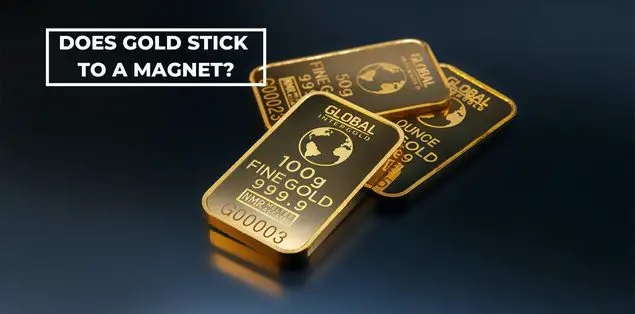So, does gold stick to a magnet? Gold is a soft metal, and many people use it for decorating purposes, whether as ornaments or otherwise. Usually, people consider it a precious and expensive souvenir, which explains its high price.
However, this metal has several properties that make it unique and different from other metals. For example, gold is one of the least-reactive metals and is resistant to many acids. But, when put in mercury or alkaline solution, it can dissolve.
One question that stands out in particular about gold is whether it has magnetic properties. Permanent magnets can keep their magnetic properties even without a current-inducing field. So is gold a permanent magnet? Does it exhibit any characteristics similar to other metals?
The answers to all your questions are right here!
Does Real Gold Stick to a Magnet?
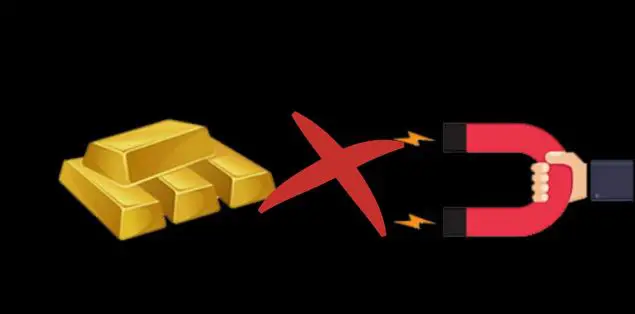
Since gold is one of the least-reactive metals, it cannot stick to a magnet on its own. This property often helps to determine whether the gold is pure.
A pure gold atom has 118 neutrons and 79 electrons and protons each. This high number of electrons makes it an excellent conductor of electricity.
Pure gold has no magnetic properties and does not get attracted to magnets. However, if you apply a massive magnetic field, the gold may become slightly magnetic and move or repel it.
How Does Magnetism Work For Metals?
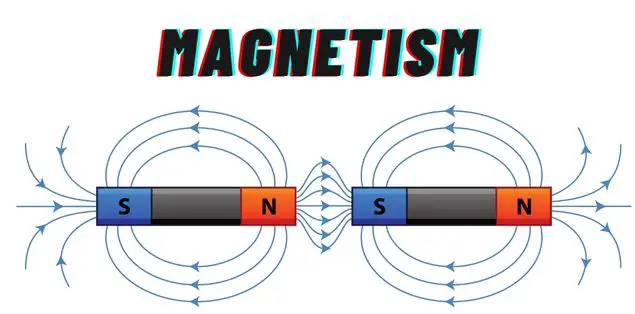
Any metal contains several electrons based on the atomic weight and number. Their configuration determines the properties of that specific metal.
The electrons arrange themselves in orbitals around the atom’s nucleus.
Some atoms contain unpaired electrons in the outermost shell, which can spin freely. These electrons generate magnetism.
An atom is highly magnetic if it has high unpaired electrons and vice versa.
Three Categories of Magnetism for Different Materials
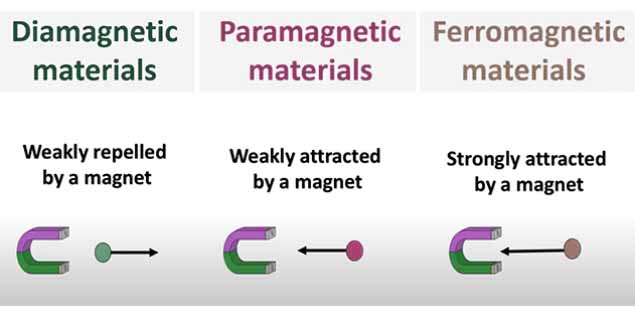
Ferromagnetic Materials
It refers to when permanent magnets or similar materials get attracted to a draw. Iron falls under this category.
Diamagnetic Materials
These materials repel an external magnetic field.
Paramagnetic Materials
These materials do not strongly attract the external magnet even on applying an external magnetic field.
Why Does Gold Fall Under Non-Magnetic Metals?
Magnetism depends upon how many unpaired electrons are in an element. Metals with a high number of such electrons are magnetic. However, gold is a transition metal, meaning all its orbitals are complete except the last or sixth one.
It contains a single electron, but this information does not mean the gold atom is unstable. On the contrary, the half-filled orbitals are stable.
When the number of unpaired electrons increases in an atom’s outer shell, the magnetic dipole increases potency. This phenomenon induces attraction to magnets in metals.
However, gold has a low potential to generate a magnetic dipole because it has only one unpaired electron. Thus, it does not exhibit any magnetic characteristics.
Gold falls under diamagnetic and paramagnetic materials simultaneously. Both these effects cancel each other out, making gold a non-magnetic material. Therefore, it is neither attracted nor repelled when it comes in contact with a magnet.
Can You Turn Gold Magnetic?
You may often wonder, can you make gold attracted to a magnet? Is it possible to turn non-magnetic materials into magnetic ones? If so, then how?
Gold can become slightly magnetic; however, it will only be for a temporary period.
If you place pure gold in a potent magnetic field, it may show slight properties of magnetism.
Similarly, gold alloys will also show magnetic characteristics. For example, if the alloy contains 70% pure gold and 30% iron or nickel inside, it will attract a magnet.
Pure gold may also acquire these properties when placed in cold weather conditions. It may also happen on applying heat under specific laboratory conditions.
Small clusters of gold may exhibit paramagnetic properties, denoting that they can attract other metals.
This effect diminishes when the cluster becomes larger. However, pure gold can never form a permanent magnet.
What Are 10K, 14K, 18K, or White Gold?
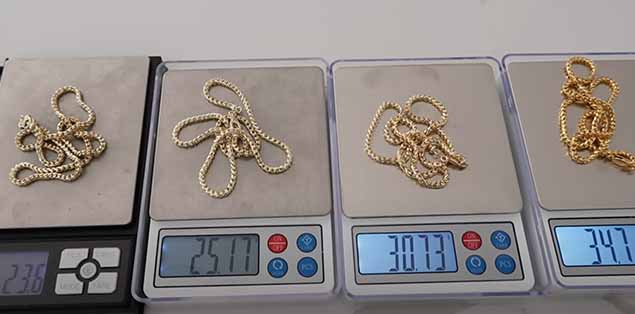
Adding different metals to gold creates different types of gold alloys. To measure the purity of gold, manufacturers use the unit karat.
Different karats refer to various ratios of gold and some other metal. One karat is equal to one out of 24 parts of the alloy.
10K gold refers to an alloy containing ten parts of gold and 14 fractions of other metals, such as copper, nickel, or silver.
Similarly, 14K gold contains 14 parts of gold and ten parts of another metal.
Likewise, 18K gold contains 18 gold parts and six other metal parts.
On the other hand, white gold refers to a mixture of gold and other white-colored metal such as nickel or silver. A bar of high karat gold is more expensive because of a higher percentage of gold.
Does 14K Gold Stick to a Magnet?
The composition of 14K gold has a higher percentage of gold than any other metal, such as nickel. Therefore, ideally, it should not stick to a magnet.
However, if it contains iron, it will stick to a magnet, in which case the gold may be fake. This conclusion arises because making a gold alloy with iron is not standard for 14K gold.
Why Do Jewelers Add Other Metals to Gold Jewelry?
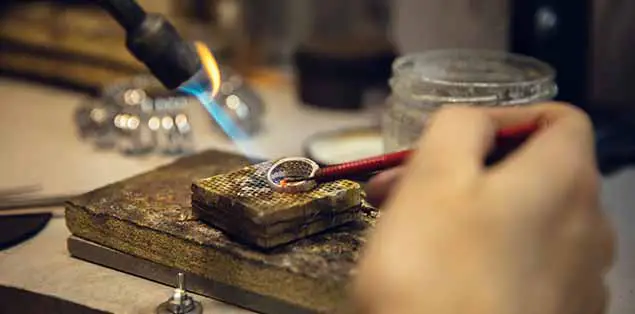
Adding other precious metals is a common practice while making gold jewelry. Most jewelers follow this procedure. But why is this practice so popular?
In its pure form, gold is a malleable metal with soft and dense properties. It can easily break or bend.
Other metals such as platinum, copper, or nickel are known for their properties, like durability and tensile strength. Adding them to your gold jewelry makes it less likely to break, bend or scratch.
These metals also provide a unique and different color to the jewelry. In addition, it becomes more durable and rigid.
Can Metal Detectors Find Gold?

One may often wonder, if pure gold is not magnetic, how can a metal detector identify it?
The answer is clear- one needs a specialized metal detector to find gold. Unfortunately, the instruments that run on lower frequencies cannot detect this metal as it has low conductivity.
Only detectors with a high frequency may identify it.
Gold exhibits better conductivity with high-frequency waves. Hence, multi-frequency or PI-type metal detectors can easily detect it. These instruments operate between 0 to 75 kilohertz and utilize several internal coils simultaneously working as transmitter and receiver.
The design of metal detectors enables them to find any metal, such as gold, silver, bronze, platinum, etc. These instruments operate at a high-frequency rate. They transmit an electromagnetic field from the search coil on the ground.
When target elements, like gold or other metals, come within the magnetic fields, they retransmit the electromagnetic frequency as they become energized.
Does White Gold Stick to a Magnet?
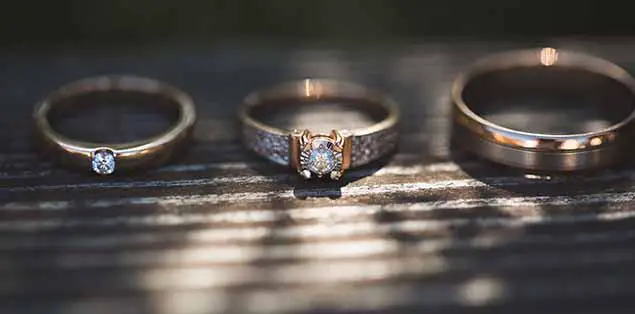
In rare cases, white gold may show some magnetic properties, depending on which metals are in the alloy that makes the white gold.
Magnetic metals such as iron or nickel will make the white gold exhibit similar properties.
Does 10K Gold Stick to a Magnet?
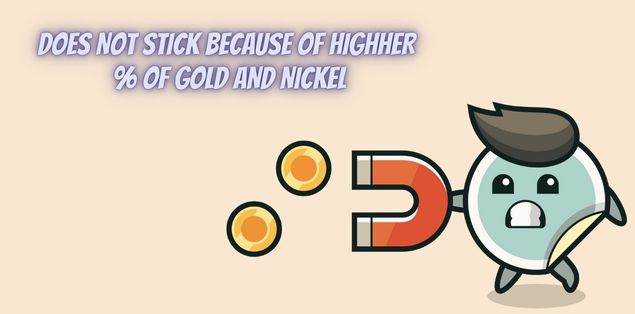
10K gold is a gold alloy containing some other metal like iron or nickel. Therefore these alloys may be magnetic depending on what metals are in the alloy.
Does Gold Plated Stick to a Magnet?

Gold plating is of several types, such as electroplating, gold leaf, gold layered, etc. a gold plated object is at least 10K, meaning there are fewer chances that it will stick to a magnet.
However, if the base metal exhibits magnetism, the object may attract a magnet.
Why Is My Gold Chain Slightly Magnetic?
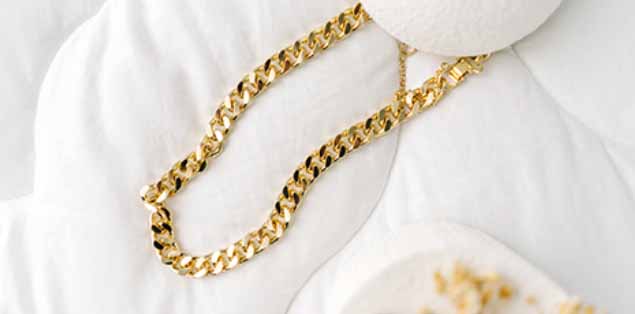
There can be several reasons for your gold chain to be magnetic. Usually, gold jewelry contains slight impurities in the form of other metals.
This procedure ensures that the jewelry does not break or damage easily, as gold is a very soft, dense metal that can bend or scratch. In addition, magnetism may be a property of the other metals or alloys used during manufacture.
How Can You Tell If Something Is Real Gold?
If you are not an expert jeweler, you may not spot fake gold or differentiate between real gold and fake. However, you can check some properties of your jewelry to identify its authenticity. Some of them are-
Magnet Test
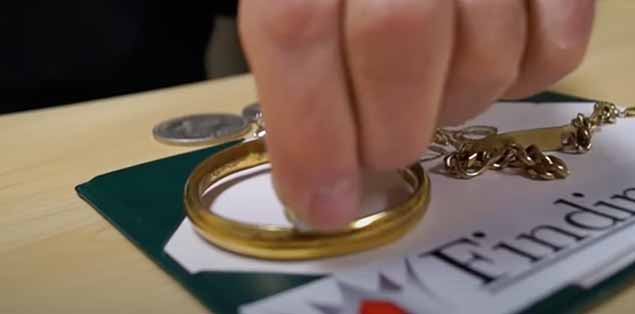
It is an effortless and accurate way to identify fake gold. If your object exhibits intense magnetic properties, it may be fake gold. Slight characteristics may indicate that it contains any gold alloy.
Weight Of Your Gold
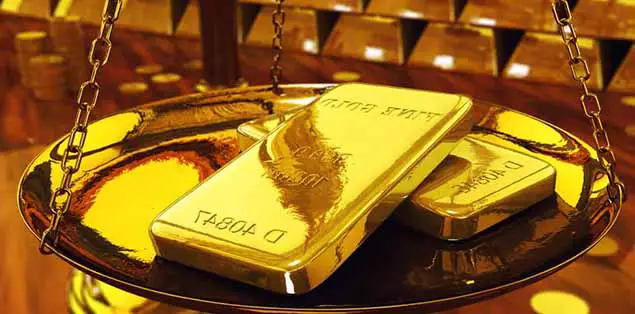
This metal has a specific weight, and if your object differs from the regular mass of the metal, it might be fake.
Color Of The Jewelry
A higher percentage of gold has a more intense yellowish tint. Therefore, if your object contains some alloy, it will not have the yellow color it should.
Density Of The Jewelry
You can take your object to a jeweler to verify its authenticity by inspecting its density.
Hallmarks
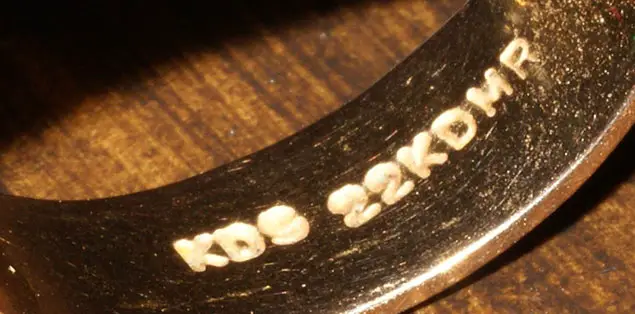
Gold in its pure form contains several marks and stamps that denote its authenticity. They are a symbol of purity and often represent the manufacturer.
Acid Test
You can also test gold in acid to check its purity. It will reveal whether your jewelry is gold-plated or solid gold. It may also determine the purity of the metal.
However, this method may cause damage to your gold jewelry and change its color.
Final Words – Does Gold Stick to a Magnet?
Gold is not just a symbol of high status. It has various applications, such as jewelry making, minting coins, scientific and medicinal purposes, and even dentistry. However, it has a massive market in jewelry because it is a precious metal.
Gold is a non-magnetic metal that may exhibit magnetic characteristics when combined with some other metal to produce an alloy. It depends on the composition of the alloy and the chemical properties of the metals added to gold.
